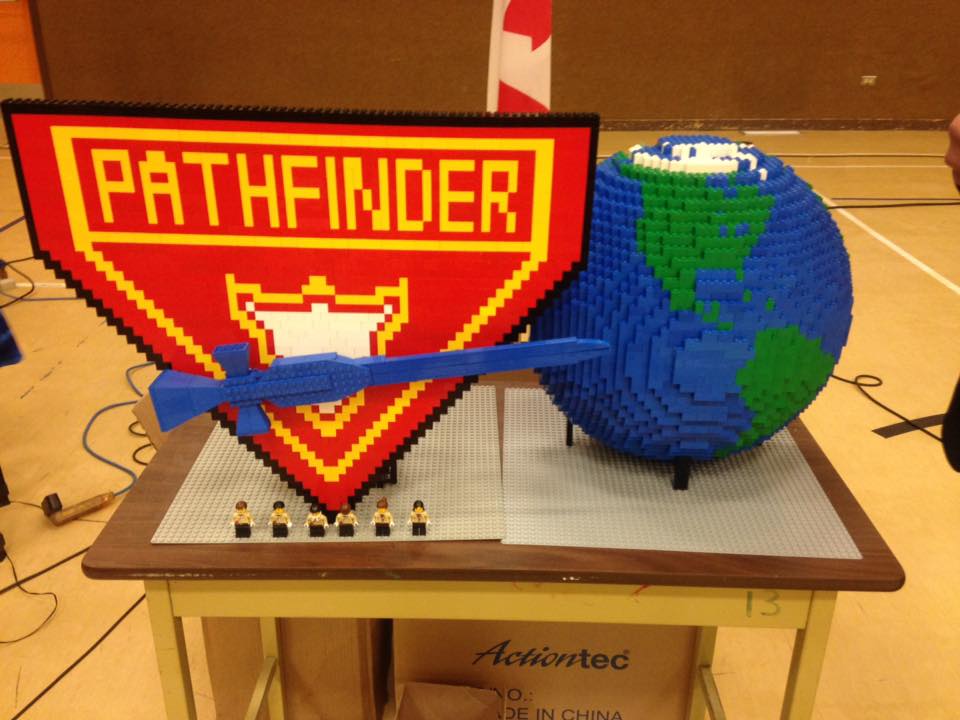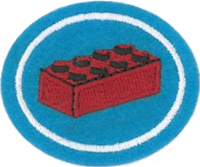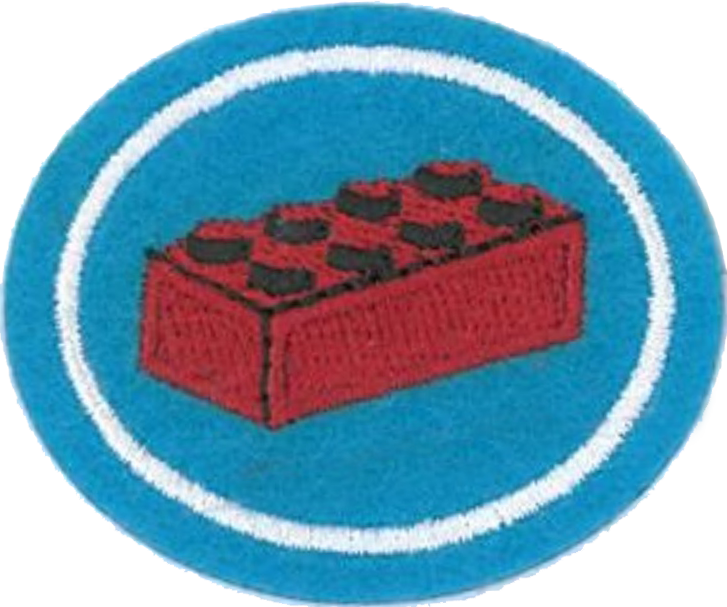Difference between revisions of "AY Honors/LEGO® Design/Answer Key 2/en"
m (FuzzyBot moved page AY Honors/LEGO Design/Answer Key/en to AY Honor LEGO® Design Answer Key used by North American Division without leaving a redirect: Part of translatable page "AY Honors/LEGO Design/Answer Key") |
(Updating to match new version of source page) |
||
| (3 intermediate revisions by the same user not shown) | |||
| Line 1: | Line 1: | ||
{{HonorSubpage}} | {{HonorSubpage}} | ||
| − | + | ||
| − | {{ | + | {{#vardefine:reqpage|{{#titleparts:{{PAGENAME}}|2}}/Requirements 2}} |
| − | + | ||
| − | + | {{ansreq|page={{#var:reqpage}}|num=1}} | |
| − | {{ansreq|page={{# | ||
<noinclude></noinclude> | <noinclude></noinclude> | ||
<!-- 1. Know the following terms: --> | <!-- 1. Know the following terms: --> | ||
<noinclude></noinclude> | <noinclude></noinclude> | ||
| − | {{ansreq|page={{# | + | |
| + | {{ansreq|page={{#var:reqpage}}|num=1a}} | ||
<noinclude></noinclude> | <noinclude></noinclude> | ||
| + | Any item made by LEGO. For example: Bricks, plates, tiles, all minfigure parts and accessories. | ||
<noinclude></noinclude> | <noinclude></noinclude> | ||
{{CloseReq}} <!-- 1a --> | {{CloseReq}} <!-- 1a --> | ||
| − | {{ansreq|page={{# | + | |
| + | {{ansreq|page={{#var:reqpage}}|num=1b}} | ||
<noinclude></noinclude> | <noinclude></noinclude> | ||
| + | The round connection point on top of a standard brick. | ||
<noinclude></noinclude> | <noinclude></noinclude> | ||
{{CloseReq}} <!-- 1b --> | {{CloseReq}} <!-- 1b --> | ||
| − | {{ansreq|page={{# | + | |
| + | {{ansreq|page={{#var:reqpage}}|num=1c}} | ||
<noinclude></noinclude> | <noinclude></noinclude> | ||
| + | A standard plastic element. Usually 6 sided (including top and bottom) and ranging in widths and lengths between 1 and 16 studs. | ||
<noinclude></noinclude> | <noinclude></noinclude> | ||
{{CloseReq}} <!-- 1c --> | {{CloseReq}} <!-- 1c --> | ||
| − | {{ansreq|page={{# | + | |
| + | {{ansreq|page={{#var:reqpage}}|num=1d}} | ||
<noinclude></noinclude> | <noinclude></noinclude> | ||
| + | A flat plastic element. One third the height of a brick element. | ||
<noinclude></noinclude> | <noinclude></noinclude> | ||
{{CloseReq}} <!-- 1d --> | {{CloseReq}} <!-- 1d --> | ||
| − | {{ansreq|page={{# | + | |
| + | {{ansreq|page={{#var:reqpage}}|num=1e}} | ||
<noinclude></noinclude> | <noinclude></noinclude> | ||
| + | A flat plastic element with no attachment points on the bottom and thinner than a standard plate. | ||
<noinclude></noinclude> | <noinclude></noinclude> | ||
{{CloseReq}} <!-- 1e --> | {{CloseReq}} <!-- 1e --> | ||
| − | {{ansreq|page={{# | + | |
| + | {{ansreq|page={{#var:reqpage}}|num=1f}} | ||
<noinclude></noinclude> | <noinclude></noinclude> | ||
| + | Similar to a plate however with no attachment points or studs on top. | ||
<noinclude></noinclude> | <noinclude></noinclude> | ||
{{CloseReq}} <!-- 1f --> | {{CloseReq}} <!-- 1f --> | ||
| − | {{ansreq|page={{# | + | |
| + | {{ansreq|page={{#var:reqpage}}|num=1g}} | ||
<noinclude></noinclude> | <noinclude></noinclude> | ||
| + | A brick that has been modified to have a downward incline. The top of the brick has fewer connection points than the bottom of the brick. | ||
<noinclude></noinclude> | <noinclude></noinclude> | ||
{{CloseReq}} <!-- 1g --> | {{CloseReq}} <!-- 1g --> | ||
| − | {{ansreq|page={{# | + | |
| + | {{ansreq|page={{#var:reqpage}}|num=1h}} | ||
<noinclude></noinclude> | <noinclude></noinclude> | ||
| + | A brick that has been modified to have an upward incline. The top of the brick has more connection points than the bottom of the brick. | ||
<noinclude></noinclude> | <noinclude></noinclude> | ||
{{CloseReq}} <!-- 1h --> | {{CloseReq}} <!-- 1h --> | ||
| − | {{ansreq|page={{# | + | |
| + | {{ansreq|page={{#var:reqpage}}|num=1i}} | ||
<noinclude></noinclude> | <noinclude></noinclude> | ||
| + | One or more elements that are combined to allow connected pieces to move in any range of motion. | ||
<noinclude></noinclude> | <noinclude></noinclude> | ||
{{CloseReq}} <!-- 1i --> | {{CloseReq}} <!-- 1i --> | ||
| − | {{ansreq|page={{# | + | |
| + | {{ansreq|page={{#var:reqpage}}|num=1j}} | ||
<noinclude></noinclude> | <noinclude></noinclude> | ||
| + | Specialized elements that are designed to connect with axles and pins. These may or may not have standard connect points. | ||
<noinclude></noinclude> | <noinclude></noinclude> | ||
{{CloseReq}} <!-- 1j --> | {{CloseReq}} <!-- 1j --> | ||
| − | {{ansreq|page={{# | + | |
| + | {{ansreq|page={{#var:reqpage}}|num=1k}} | ||
<noinclude></noinclude> | <noinclude></noinclude> | ||
| + | Elements that are designed to store, carry, and use electricity. For example: Battery Packs, power cords, lights, motors, remote controls, and remote control receivers. | ||
<noinclude></noinclude> | <noinclude></noinclude> | ||
{{CloseReq}} <!-- 1k --> | {{CloseReq}} <!-- 1k --> | ||
| − | {{ansreq|page={{# | + | |
| + | {{ansreq|page={{#var:reqpage}}|num=1l}} | ||
<noinclude></noinclude> | <noinclude></noinclude> | ||
| − | + | Typically 4 elements that make up a LEGO person: 1. Hat, hair, helmet, etc.; 2. Head; 3. Torso, usually includes arms and hands; 4. Legs, usually includes waist. | |
| − | |||
| − | |||
<noinclude></noinclude> | <noinclude></noinclude> | ||
{{CloseReq}} <!-- 1l --> | {{CloseReq}} <!-- 1l --> | ||
| + | |||
| + | <!--T:15--> | ||
| + | More information on types of parts and their actual names: [http://guide.lugnet.com/partsref/ Lugnet Parts Ref] | ||
{{CloseReq}} <!-- 1 --> | {{CloseReq}} <!-- 1 --> | ||
| − | {{ansreq|page={{# | + | {{ansreq|page={{#var:reqpage}}|num=2}} |
<noinclude></noinclude> | <noinclude></noinclude> | ||
<!-- 2. Build and/or find examples of following types of scale models: --> | <!-- 2. Build and/or find examples of following types of scale models: --> | ||
<noinclude></noinclude> | <noinclude></noinclude> | ||
| − | {{ansreq|page={{# | + | {{ansreq|page={{#var:reqpage}}|num=2a}} <!--T:22--> |
<noinclude></noinclude> | <noinclude></noinclude> | ||
| − | + | These are a range of scales where the size of a person is smaller than a minifigure. | |
<noinclude></noinclude> | <noinclude></noinclude> | ||
{{CloseReq}} <!-- 2a --> | {{CloseReq}} <!-- 2a --> | ||
| − | {{ansreq|page={{# | + | {{ansreq|page={{#var:reqpage}}|num=2b}} <!--T:23--> |
<noinclude></noinclude> | <noinclude></noinclude> | ||
| − | + | These are builds proportioned to the size of a standard minifigure. | |
| − | |||
| − | |||
<noinclude></noinclude> | <noinclude></noinclude> | ||
{{CloseReq}} <!-- 2b --> | {{CloseReq}} <!-- 2b --> | ||
| − | {{ansreq|page={{# | + | {{ansreq|page={{#var:reqpage}}|num=2c}} <!--T:24--> |
<noinclude></noinclude> | <noinclude></noinclude> | ||
| + | These are builds that are actual or life size. | ||
| + | [[File:Lego Design.jpg]] | ||
[http://www.brickshelf.com Brickshelf] has a lot of amazing scale models here. Just type in the search what you are looking for. | [http://www.brickshelf.com Brickshelf] has a lot of amazing scale models here. Just type in the search what you are looking for. | ||
| − | [http://www.bricklink.com Bricklink] allows you to purchase | + | [http://www.bricklink.com Bricklink] allows you to purchase LEGO® bricks if your looking at building a certain model. Remember to get your parent's permission before purchasing LEGO® individually! |
| − | [http://www.ldraw.org/ LDraw] If you can not get access to | + | [http://www.ldraw.org/ LDraw] If you can not get access to LEGO®. This is a virtual LEGO® Program that you can use on the computer to use your imagination to build freely with. |
<noinclude></noinclude> | <noinclude></noinclude> | ||
{{CloseReq}} <!-- 2c --> | {{CloseReq}} <!-- 2c --> | ||
{{CloseReq}} <!-- 2 --> | {{CloseReq}} <!-- 2 --> | ||
| − | {{ansreq|page={{# | + | {{ansreq|page={{#var:reqpage}}|num=3}} |
<noinclude></noinclude> | <noinclude></noinclude> | ||
<!-- 3. Choose one of the following: --> | <!-- 3. Choose one of the following: --> | ||
<noinclude></noinclude> | <noinclude></noinclude> | ||
| − | {{ansreq|page={{# | + | {{ansreq|page={{#var:reqpage}}|num=3a}} <!--T:25--> |
<noinclude></noinclude> | <noinclude></noinclude> | ||
<noinclude></noinclude> | <noinclude></noinclude> | ||
{{CloseReq}} <!-- 3a --> | {{CloseReq}} <!-- 3a --> | ||
| − | {{ansreq|page={{# | + | |
| + | {{ansreq|page={{#var:reqpage}}|num=3b}} <!--T:26--> | ||
<noinclude></noinclude> | <noinclude></noinclude> | ||
| Line 105: | Line 129: | ||
{{CloseReq}} <!-- 3b --> | {{CloseReq}} <!-- 3b --> | ||
{{CloseReq}} <!-- 3 --> | {{CloseReq}} <!-- 3 --> | ||
| − | {{ansreq|page={{# | + | {{ansreq|page={{#var:reqpage}}|num=4}} |
<noinclude></noinclude> | <noinclude></noinclude> | ||
| − | <!-- 4. | + | <!-- 4. Choose one of the following: --> |
| − | You | + | You are working on the [[AY Honors/Christian_Storytelling|Christian Storytelling]] honor right? |
| + | You could also include this as a way to communicate the "visual" requirement for many of the newer nature honors. | ||
<noinclude></noinclude> | <noinclude></noinclude> | ||
| + | |||
{{CloseReq}} <!-- 4 --> | {{CloseReq}} <!-- 4 --> | ||
| − | {{ansreq|page={{# | + | |
| + | {{ansreq|page={{#var:reqpage}}|num=5}} | ||
<noinclude></noinclude> | <noinclude></noinclude> | ||
<!-- 5. From your imagination create your own design, using at least 10 pieces, in 2 of the 5 categories below and share both designs with your group or club. --> | <!-- 5. From your imagination create your own design, using at least 10 pieces, in 2 of the 5 categories below and share both designs with your group or club. --> | ||
| + | You can find some ideas on scenes to build on stories around the Bible at [http://thebrickbible.com/ Brick Bible] | ||
<noinclude></noinclude> | <noinclude></noinclude> | ||
| − | {{ansreq|page={{# | + | {{ansreq|page={{#var:reqpage}}|num=5a}} |
<noinclude></noinclude> | <noinclude></noinclude> | ||
<noinclude></noinclude> | <noinclude></noinclude> | ||
{{CloseReq}} <!-- 5a --> | {{CloseReq}} <!-- 5a --> | ||
| − | {{ansreq|page={{# | + | {{ansreq|page={{#var:reqpage}}|num=5b}} |
<noinclude></noinclude> | <noinclude></noinclude> | ||
<noinclude></noinclude> | <noinclude></noinclude> | ||
{{CloseReq}} <!-- 5b --> | {{CloseReq}} <!-- 5b --> | ||
| − | {{ansreq|page={{# | + | {{ansreq|page={{#var:reqpage}}|num=5c}} |
<noinclude></noinclude> | <noinclude></noinclude> | ||
<noinclude></noinclude> | <noinclude></noinclude> | ||
{{CloseReq}} <!-- 5c --> | {{CloseReq}} <!-- 5c --> | ||
| − | {{ansreq|page={{# | + | {{ansreq|page={{#var:reqpage}}|num=5d}} |
<noinclude></noinclude> | <noinclude></noinclude> | ||
<noinclude></noinclude> | <noinclude></noinclude> | ||
{{CloseReq}} <!-- 5d --> | {{CloseReq}} <!-- 5d --> | ||
| − | {{ansreq|page={{# | + | {{ansreq|page={{#var:reqpage}}|num=5e}} |
<noinclude></noinclude> | <noinclude></noinclude> | ||
| Line 144: | Line 172: | ||
{{CloseReq}} <!-- 5e --> | {{CloseReq}} <!-- 5e --> | ||
{{CloseReq}} <!-- 5 --> | {{CloseReq}} <!-- 5 --> | ||
| − | {{ansreq|page={{# | + | |
| + | {{ansreq|page={{#var:reqpage}}|num=6}} | ||
<noinclude></noinclude> | <noinclude></noinclude> | ||
| − | <!-- 6. | + | <!-- 6. From your imagination create your own design in 2 of the 5 categories below and share both designs with your group or club. --> |
<noinclude></noinclude> | <noinclude></noinclude> | ||
| − | {{ansreq|page={{# | + | {{ansreq|page={{#var:reqpage}}|num=6a}} <!--T:31--> |
<noinclude></noinclude> | <noinclude></noinclude> | ||
| − | |||
| − | |||
| − | |||
| − | |||
<noinclude></noinclude> | <noinclude></noinclude> | ||
{{CloseReq}} <!-- 6a --> | {{CloseReq}} <!-- 6a --> | ||
| − | {{ansreq|page={{# | + | {{ansreq|page={{#var:reqpage}}|num=6b}} <!--T:9--> |
<noinclude></noinclude> | <noinclude></noinclude> | ||
| Line 164: | Line 189: | ||
{{CloseReq}} <!-- 6b --> | {{CloseReq}} <!-- 6b --> | ||
{{CloseReq}} <!-- 6 --> | {{CloseReq}} <!-- 6 --> | ||
| − | {{ansreq|page={{# | + | {{ansreq|page={{#var:reqpage}}|num=7}} |
<noinclude></noinclude> | <noinclude></noinclude> | ||
| − | <!-- 7. Write a 250 | + | <!-- 7. Write a 250 word paragraph, or in a 3-5 minute presentation to your group or club, tell how you can use LEGO® to witness to those that don’t know about God. --> |
| − | Stop Motion Animation using | + | Stop Motion Animation using LEGO® can be a great use to show events that happened in the Bible in a cool, fun way.--> |
<noinclude></noinclude> | <noinclude></noinclude> | ||
{{CloseReq}} <!-- 7 --> | {{CloseReq}} <!-- 7 --> | ||
| + | {{ansreq|page={{#var:reqpage}}|num=Note}} | ||
<noinclude></noinclude> | <noinclude></noinclude> | ||
| − | + | <!-- Notes --> | |
| − | LEGO®, the | + | LEGO®, the LEGO® logo and the minifigure are trademarks and/or copyrights of The LEGO® Group. |
| − | Pathfinders and the Seventh-day Adventist Church are not affiliated with and/or facilitated by The | + | Pathfinders and the Seventh-day Adventist Church are not affiliated with and/or facilitated by The LEGO® Group. |
| + | <noinclude></noinclude> | ||
| + | {{CloseReq}} <!-- Note --> | ||
| + | <noinclude></noinclude> | ||
==References== | ==References== | ||
| + | <noinclude></noinclude> | ||
| − | [[Category: | + | [[Category:AY Honors/noindex{{GetLangSuffix}}|{{SUBPAGENAME}}]] |
| − | |||
{{CloseHonorPage}} | {{CloseHonorPage}} | ||
Latest revision as of 14:57, 3 January 2023
1
1a
Any item made by LEGO. For example: Bricks, plates, tiles, all minfigure parts and accessories.
1b
The round connection point on top of a standard brick.
1c
A standard plastic element. Usually 6 sided (including top and bottom) and ranging in widths and lengths between 1 and 16 studs.
1d
A flat plastic element. One third the height of a brick element.
1e
A flat plastic element with no attachment points on the bottom and thinner than a standard plate.
1f
Similar to a plate however with no attachment points or studs on top.
1g
A brick that has been modified to have a downward incline. The top of the brick has fewer connection points than the bottom of the brick.
1h
A brick that has been modified to have an upward incline. The top of the brick has more connection points than the bottom of the brick.
1i
One or more elements that are combined to allow connected pieces to move in any range of motion.
1j
Specialized elements that are designed to connect with axles and pins. These may or may not have standard connect points.
1k
Elements that are designed to store, carry, and use electricity. For example: Battery Packs, power cords, lights, motors, remote controls, and remote control receivers.
1l
Typically 4 elements that make up a LEGO person: 1. Hat, hair, helmet, etc.; 2. Head; 3. Torso, usually includes arms and hands; 4. Legs, usually includes waist.
More information on types of parts and their actual names: Lugnet Parts Ref
2
2a
These are a range of scales where the size of a person is smaller than a minifigure.
2b
These are builds proportioned to the size of a standard minifigure.
2c
These are builds that are actual or life size.

Brickshelf has a lot of amazing scale models here. Just type in the search what you are looking for.
Bricklink allows you to purchase LEGO® bricks if your looking at building a certain model. Remember to get your parent's permission before purchasing LEGO® individually!
LDraw If you can not get access to LEGO®. This is a virtual LEGO® Program that you can use on the computer to use your imagination to build freely with.
3
3a
3b
4
You are working on the Christian Storytelling honor right?
You could also include this as a way to communicate the "visual" requirement for many of the newer nature honors.
5
You can find some ideas on scenes to build on stories around the Bible at Brick Bible
5a
5b
5c
5d
5e
6
6a
6b
7
Stop Motion Animation using LEGO® can be a great use to show events that happened in the Bible in a cool, fun way.-->
Note
LEGO®, the LEGO® logo and the minifigure are trademarks and/or copyrights of The LEGO® Group.
Pathfinders and the Seventh-day Adventist Church are not affiliated with and/or facilitated by The LEGO® Group.


